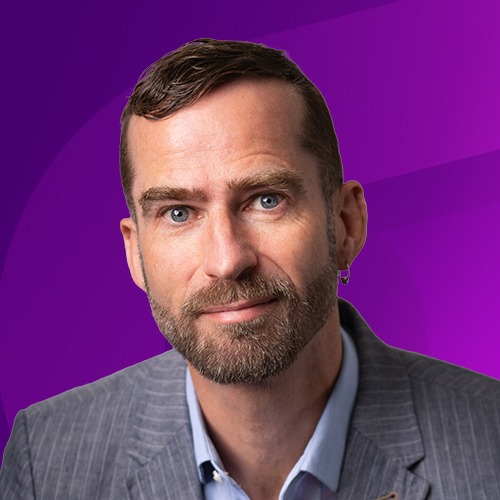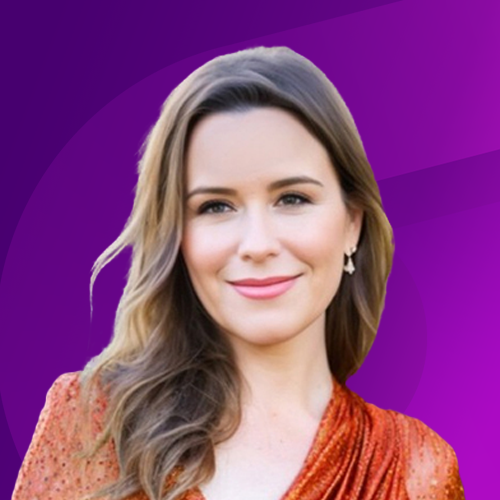In this Gamechangers in Resilience interview, we sit down with Patrick Van Horne, a crisis and resilience professional who has spent over two decades helping organizations stay ahead of disasters before they spiral out of control.
From emergency management offices to utilities, healthcare systems, and major event venues, Patrick has worked across the public and private sectors to ensure teams don’t just react to crises—they anticipate and outmaneuver them.
A former Marine Corps officer who stepped into service after 9/11, he’s worn many hats as an entrepreneur, consultant, emergency manager, and volunteer. He literally wrote the book on spotting threats before they strike—Left of Bang: How the Marine Corps’ Combat Hunter Program Can Save Your Life.
In this conversation, Patrick shares how situational awareness, pattern recognition, and behavioral analysis aren’t just battlefield tactics but essential tools for today’s resilience leaders looking to navigate an increasingly complex risk landscape.
Q: Can you share the story behind your journey, from being a Marine infantry officer to becoming a leader in disaster preparedness?
Patrick: My journey into disaster preparedness started on September 11th. I was a freshman in college, not too far north of New York City, and the attacks put me on a path I’m still on today. After college, I spent seven years as an infantry officer in the Marine Corps, where I developed a deep appreciation for decision-making under uncertainty, operational planning, and situational awareness—skills that would later shape my work in emergency management.
Then, in 2012, Hurricane Sandy struck New York and New Jersey, and I started volunteering with Team Rubicon. That experience opened my eyes to the world of disaster response. Before that, I didn’t even know it was a thing—at least, not in a way that felt like a career path.
Not long after, I decided to formally move into the field. That led me to a role with Boulder’s Office of Emergency Management in Colorado. From there, I found the type of work I truly enjoy—first as a consultant and leader within Hagerty Consulting’s Preparedness Division, and now through my own company, often working alongside trusted partners in the field, helping organizations prepare for disasters.
Q: You recently started a new chapter with The Left of Bang Newsletter, sharing insights on disaster management, public safety, and security. What has that experience been like, and how does it fit into your broader work?
Patrick: Writing has always been an important part of my career. When I launched my company almost 14 years ago, writing helped me build it—starting with Left of Bang: How the Marine Corps’ Combat Hunter Program Can Save Your Life. Between the book, articles on my company’s blog, and a newsletter, writing was how I connected with people in the field and grew the business.
But for a period, I struggled to write consistently and get ideas from concept to publication. When I finally returned to it, I realized my content was too scattered—spread across a blog on my website, a newsletter through a third-party platform, and a separate section for exclusive client content. It was fragmented, making it harder for people to find and engage with the material, and for me to stay consistent in my writing process.
So when I returned to writing, I wanted to centralize everything. That’s how The Left of Bang Newsletter came to be. Through the newsletter, I break down critical lessons in disaster preparedness, public safety, and security—lessons drawn not just from my own experience, but from the real challenges organizations are navigating today.
These are often the same challenges my clients are working through. Whether it’s analyzing past disasters, exploring decision-making under pressure, or highlighting insights from leaders in the field, the goal is to provide actionable intelligence that helps readers improve their preparedness and response.
If you’re serious about staying left of bang, you can explore it at patrickvanhorne.substack.com.
Q: You authored a book, Left of Bang. Could you elaborate on what ‘getting left of bang’ means to you? How has that shaped your work?
Patrick: Left of Bang tells the story of a Marine Corps program created in the early days of the wars in Iraq and Afghanistan to teach deploying Marines how to observe human behavior and recognize the warning signs of potential violence before an attack occurs. The goal was simple: develop the ability to spot pre-event indicators—subtle but critical warning signs that signal something bad is coming—so Marines could take action before the attack happened.
At its core, getting left of bang is about proactive decision-making. It’s about recognizing those early indicators and using them to buy yourself the time needed to act—whether that means stopping the attack outright or taking steps to protect yourself, your team, or your organization.
But there’s another side to it. Some incidents can’t be prevented. No matter how well you plan, certain events—whether disasters, crises, or violent acts—are going to happen. In those cases, getting left of bang is still about recognizing the warning signs, but instead of preventing the event, it’s about positioning your organization to succeed and grow when it does occur. That requires preparation and developing capabilities across an organization long before a crisis unfolds.
So at the most basic level, getting left of bang comes down to a simple question: What are you doing before the crisis? Are you positioning yourself to act early, or are you just waiting to react? That distinction makes all the difference.
Q: The book is, in part, about trusting our gut when we sense something is not quite right. How do you think about this?
Patrick: Trusting your gut isn’t about acting on vague feelings—it’s about recognizing patterns your brain has already picked up on, even if you can’t immediately articulate why something feels off.
In Left of Bang, we focus on building that intuitive sensitivity by learning to observe, categorize, and assess behavior in a structured way. The more you train yourself to recognize pre-event indicators, the faster and more confidently you can act on them.
Intuition improves with experience, but it’s not enough on its own. The key is pairing that gut feeling with a deliberate decision-making process. That’s why I emphasize training and preparation—so when your instincts signal that something isn’t right, you have the framework and confidence to take meaningful action rather than hesitating or second-guessing yourself.
Q: You’ve been a huge champion of the concept of Microsimulations and microlearning. Why do you think this is a gamechanger for organizations?
Patrick: In so many after-action reports, a common theme emerges: those involved in the response needed more training. But the issue isn’t that we need more lectures or PowerPoint presentations—it’s that we need more practice.
Disasters are, thankfully, rare events at the local and organizational level, but that also means we don’t get regular, real-world practice. That’s why I see Microsimulations as a gamechanger. They allow organizations to package training into bite-sized, high-frequency scenarios rather than relying on a single full-day exercise once a year. Instead of walking into a crisis after barely practicing—like a football team showing up to the Super Bowl after skipping preseason—leaders and teams get ongoing reps that reinforce decision-making, coordination, and execution.
Ultimately, if we can’t put our plans into action when it matters, they’re just words on paper. Microsimulations and microlearning provide a structured way to bridge that gap, making preparedness a continuous process rather than a one-time event. To me, they represent a critical step in professionalizing the field and ensuring we are truly ready for the next disaster.
Q: What is the leadership playbook you are writing in real-time?
Patrick: I once had a boss ask me, “What’s more important, leadership or management?” Before I could answer, he said, “Neither—people follow competence.” That idea has stuck with me, and I believe competence comes in three forms: leadership, management, and technical expertise. To be effective, leaders need to develop in all three areas.
That’s what I’m writing about today through The Left of Bang Newsletter. It’s for leaders who are preparing themselves and their teams for an uncertain future—building the skills to navigate complexity, make decisions under pressure, and turn preparedness into action.
Right now, disaster management is at a turning point. We have smart people entering the field, emerging technologies creating new opportunities, and a growing public interest in readiness. As leaders build their teams to meet these challenges, my goal is to keep writing, sharing insights, and supporting this profession however I can.














